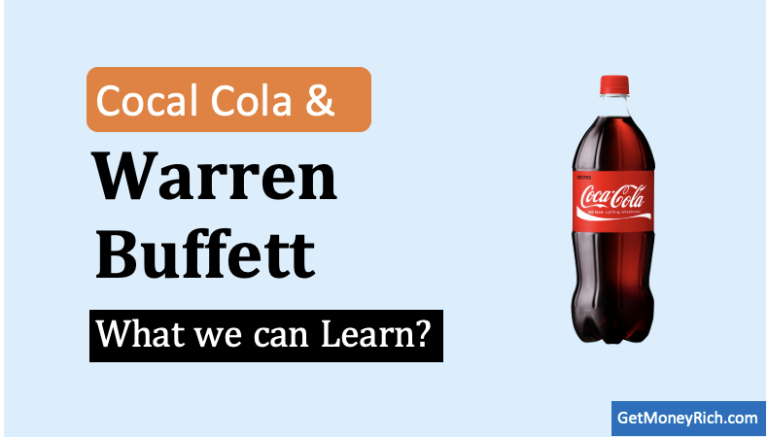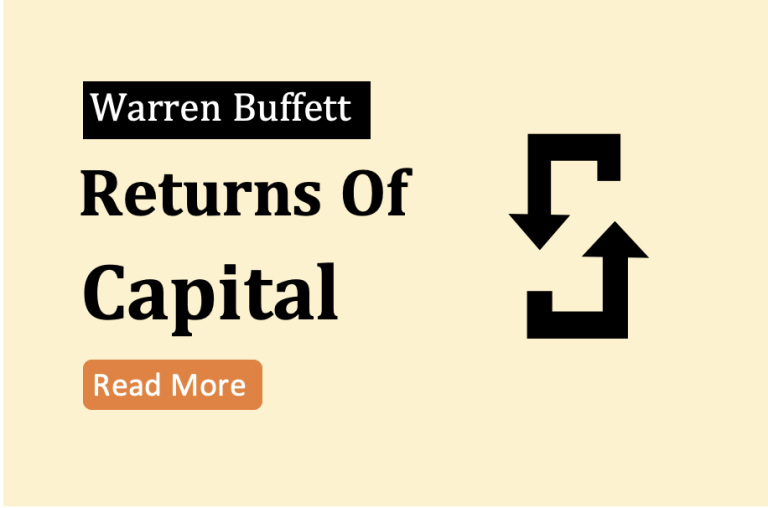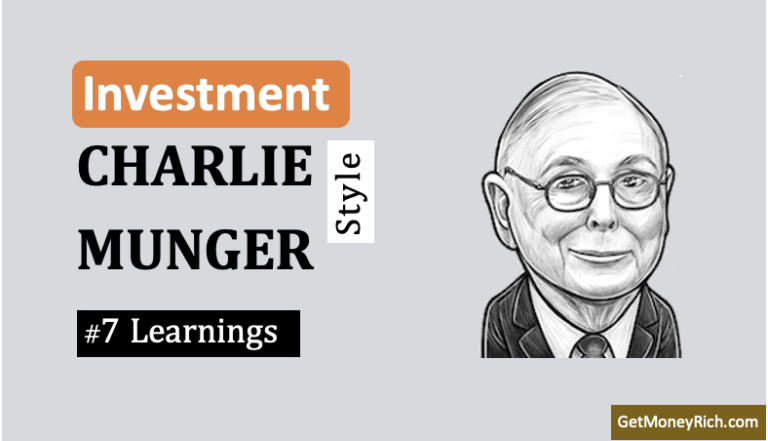In the world of stock investing, the path to success is greatly dependent on our understanding of this concept called business moat. Whether one is a novice or an experienced investor, clarity of this fundamental principle is essential. Companies listed in the stock market is complex, and making money out of stocks is even more complicated. In this scenario, building long term wealth from stocks is not an easy task. However, some principles can help us in our endeavour. Understanding of the concept of “Business Moat” is one such principle.
Imagine a castle surrounded by a deep, impenetrable trench. This trench is symbolic of a moat in economic sense. The trench/moat (around the castle) is built to protect the inhabitants and valuables from outside threats.

Using the same analogy for businesses, a company can build a kind of moat for itself. It is necessary to fortify their competitive advantage. This way they can safeguard their market share and margins.
This concept of economic moat was popularised by legendary investor Warren Buffett. Value investors apply this principle to identify fundamentally super strong companies.
Business moats refer to the unique advantages that allow a company to outperform its competitors. This way, they maintain their position in the market. These advantages can take various forms, from cost efficiencies and brand recognition to patents, and customer loyalty.
In this article, we’ll delve into the different types of business moats. We will see real-world examples to understand the practical impact of this principle.
We’ll also learn about the strategies we can use for identifying companies with strong moats.
Topics:
Point #1: Definition and Significance of Moat
A strong business moat acts as a shield, protecting a company from competition and allowing it to flourish within its industry. Think of “Moat” as a special advantage that sets a company apart from others. This unique advantage in turn helps the company to generate more profits over time.
Let’s consider a fictional company called ABC Electronics. This company has developed a groundbreaking technology (say a micro processor) that allows smartphones to last thrice as long on a single charge compared to its competitors. This technological superiority creates an economic moat for ABC Electronics.
Battery life is a critical specification for smart phone users. Hence, smartphone manufacturers are more likely to choose ABC electronics products over others due to the longer battery life.
But why are business moats so important?
Well, think of it this way: in a fiercely competitive market, companies without moats are like ships without defence mechanisms. The constantly at risk of being overtaken by rival ships or pirates. Let’s understand the importance of business moat using three examples:
Example #1: Company with No Economic Moat
Consider the case of Blockbuster, a once-dominant player in the video rental industry. Blockbuster failed to build a significant economic moat to protect its business from competitors. As a result, when new technologies like DVD rental kiosks and later online streaming emerged, Blockbuster was unable to adapt quickly enough.
Its lack of innovation and failure to anticipate changing consumer preferences led to its demise. Blockbuster filed for bankruptcy in 2010 and ultimately closed its remaining stores.
For we investors, this example serve as a cautionary tale of the consequences of neglecting to build an economic moat. We must learn to identify companies which are not innovating and adapting fast enough. Such companies may look like a blockbuster stock (pun intended) now, but without innovating they are doing more self-harm.
The Indian equivalent of Blockbuster could be Reliance Communications (RCom) and Videocon. Both of them were once a major player in the Indian market. However, due to various factors including intense competition, they no longer in their core business.
Example #2: Company with a Strong Economic Moat
Now we’ll see a contrasting example to the Blockbuster, The Coca-Cola Company.
Coca-Cola has thrived for over a century in the highly competitive beverage industry. Despite selling a product that could theoretically be easily duplicated by competitors. However, Coca-Cola’s enduring success can be attributed to its strong brand recognition, extensive distribution network, and loyal customer base.
These factors collectively form a formidable business moat. It has allowed Coca-Cola to maintain its market leadership position for decades.
This illustrates the importance of building and preserving economic moats in sustaining long-term business success.
Example #3: Indian Company With A Wide Moat
Amul, the dairy cooperative based in India, could be considered an equivalent to The Coca-Cola in terms of a wide business moat. Amul has established itself as a household name in India with a strong presence in the dairy industry.
It has built a robust economic moat through several factors:
- Brand Recognition: Amul has a highly recognised and trusted brand in India, synonymous with quality dairy products. This strong brand recognition has enabled Amul to command a premium price for its products and maintain customer loyalty.
- Extensive Distribution Network: Amul has an extensive distribution network that reaches even the most remote parts of India. This widespread distribution network gives Amul a significant competitive advantage over its competitors.
- Vertical Integration: Amul follows a model of vertical integration, wherein it controls every aspect of the dairy production process. It starts from the procurement of milk from farmers to the production and distribution of dairy products. This tight control over the supply chain helps Amul maintain quality standards and cost efficiencies.
- Farmer Cooperative Structure: Amul operates as a cooperative. It is owned and governed by farmers. This unique structure ensures a steady supply of milk. It also fosters a sense of ownership and commitment among farmers. This further strengths Amul’s competitive position.
Point #2: Types of Business Moats
Understanding the various types of economic moats is important for investors. Economic moats serve as a shield, protecting companies from the onslaught of competition. It enables them to thrive in their respective industries over the long term.
Understanding the various types of business moats helps us see how companies can widen their competitive edge through specific focus areas.
2.1 The Benefit of Cost
Cost advantages occur when a company can produce goods or services at a lower cost compared to its competitors. One notable example is Titan Company. Titan benefits from economies of scale in its watch manufacturing process. It allows it to produce high-quality watches at competitive prices. This cost advantage has helped Titan maintain its dominance in the Indian watch market.
2.2 Networking
Network effects occur when the value of a product or service increases as more people use it. A prime example in India is Google Pay, a digital payments platform. Google Pay’s widespread adoption among people has created a network effect. It has made it a go-to platform for digital transactions in India. As more users join the platform, the value of Google Pay increases. It further reinforces its dominance in the digital payments industry.
2.3 Customer Retention Strategy
Great companies can create soft barriers for their customers to switch to the competition. We can also understand it like this. They make their customers so comfortable that even if the customer is thinking about switching, migration might look like a task.
This is what I mean by soft barriers. Big companies do it by creating switching costs. Switching costs refer to the expenses or inconveniences incurred by customers when switching from one product or service to another.
Indian Banks (like HDFC Bank, ICICI Bank, Axis Bank, etc) leverages switching costs effectively. These Banks offers a wide range of financial products and services. Their customers are not only banking with them, they are also using stock trading platform, bank lockers, etc services.
Such customers often hesitate to switch banks due to the hassle involved in transferring accounts and adjusting to new banking interfaces. This high switching cost contributes to these Bank’s market position.
2.4 Perception
Building a positive perception for a company in the eyes of the existing and potential customers is a part of business moat creation. How companies do it? By creating and growing the size of their intangible assets.
Intangible assets, such as patents, brands, and intellectual property, can provide a significant competitive advantage.
TCS and Infosys, has built a strong brand reputation for delivering high-quality software solutions. This brand recognition not only attracts clients but also allows them to command premium prices. This gives them a distinct competitive edge in the IT industry.
2.5 Efficient Scale
Efficient scale occurs when a company operates at an optimal size, neither too small nor too large. This balance is essential to maximize efficiency and profitability.
Maruti Suzuki India Limited exemplifies efficient scale in the automotive industry. Maruti efficiently manufactures and distributes vehicles tailored to the needs of Indian consumers. Its optimal scale allows Maruti Suzuki to achieve cost efficiencies and maintain competitive pricing.
By understanding these different types of economic moats (with examples) we can better assess the competitive advantages of companies.
Point #3: Identifying Business Moats
Identifying economic moat of a business is not as straight forward. But there are a few tricks To identify economic moats effectively, stock analysts can employ a few tips that focus on both financial metrics and non-financial indicators.
3.1 Analyzing Financial Statements
When analyzing financial statements, analysts should pay close attention to specific metrics that can indicate the presence of economic moats. A combination of the below three factors can work as a strong pointer towards a wide or a narrow business moat.
- a. Profit Margins: Companies with strong moats typically have higher profit margins. It is due to their ability to charge premium prices or operate more efficiently.
- b. Return on Equity (ROE): Wide moat companies also display a consistently high ROE. It is suggestive of the fact that the company is generating significant profits relative to its shareholders’ equity.
- c. Revenue Growth: Companies with wide business moats often exhibit steady revenue growth over time. It is again a reflection their ability to capture market share and fend off competitors.
For example, analyzing the financial statements of Hindustan Unilever Limited (HUL) reveals consistently high profit margins and ROE, along with robust revenue growth. It is one of the wide moat companies of the Indian stock market.
3.2 Non-Financial Indicators
In addition to financial metrics, analysts should consider non-financial factors that can serve as better indicators (than financial of economic moats in a business:
- Brand Recognition: Companies with strong brands names often enjoy higher customer loyalty and pricing power. Overtime, people tend to start following their favourite brands like a cult. This creates a clear competitive edge for the company.
- Patents and Intellectual Property: Ownership of patents and intellectual property can protect a company’s products or services. This prevents the imitation by competitors and can create a temporary wide moat for the company.
- Network Effects: Businesses that benefit from network effects, such as social media platforms or online marketplaces, can establish formidable business moats. It is done through the sheer size and engagement of the user base.
Examining the non-financial factors of Asian Paints reveals its strong brand reputation, extensive portfolio of patents, and widespread distribution networks. All of this contributes to its moat in the highly competitive paint industry.
Point #4. Case Study: Hindustan Unilever Limited (HUL)
Let’s learn how HUL navigates the challenges with a wide business moat.
Hindustan Unilever Limited (HUL) is a giant in the FMCG sector. But even FMCG giants face challenges. HUL’s financial reports for the last 2 years show a slowdown in growth. For instance, their revenue growth in FY 2022-23 was 15.9% compared to 18.8% in FY 2021-22 (check report)
This raises a question: Can HUL regain its growth momentum? The answer might lie in HUL’s strong economic moat, a set of advantages that make it difficult for competitors to steal market share.
Let’s explore how this moat has been built and how it can power future growth.
4.1 The Pillars of HUL’s Moat
- Extensive Distribution Network: HUL’s distribution network is like a web reaching millions of stores across India. This web has penetration both in cities and remote villages. That’s the strong component of HUL’s wide business moat. Building this takes time and immense resources, giving HUL a significant edge. Competitors struggle to match this reach, allowing HUL to get its products onto shelves quickly and efficiently.
- Brand Power & Trust: Think of your favourite HUL brand, be it Horlicks, Dove, Surf, Lux, Lipton, Bru, etc. For HUL, this list is endless. These brands have been built over decades, synonymous with reliable household names. This brand loyalty translates to a strong consumer base willing to choose HUL over new entrants.
- Innovation & Product Development: HUL isn’t just about old favourites. They also innovate, launching new products and adapting existing ones. This is done to suit evolving consumer preferences. This process keeps them at the forefront driving future demand and business growth.
4.2 Future Growth: Leveraging the Moat
HUL’s economic moat positions them perfectly to tap into two key growth trends:
- Premiumisation: As Indian consumers’ disposable incomes rise, they’re willing to spend more on higher-quality products. HUL’s strong brand image allows them to extend their existing brands into premium segments. They can offer a trusted choice for those seeking an upgrade and also charge a premium price for it.
- Rural Penetration: Millions of Indians reside in rural areas. It presents a vast untapped market. HUL’s extensive distribution network allows them to reach these consumers effectively. By developing products suited to rural needs and price points, HUL can significantly expand its reach.
4.3 Challenges and the Moat’s Role
The FMCG market is dynamic, with new players emerging. But HUL’s moat acts as a shield. Their established distribution network allows them to react swiftly to new competition. This way they can get new products onto store shelves before rivals can establish a foothold.
HUL’s recent performance might raise concerns. But its economic moat remains a powerful asset. By leveraging its brand power, distribution network, and constant innovation, HUL is positioned to capitalize on the growing Indian FMCG market.
While the moat doesn’t ensure smooth sailing, it equips HUL with a significant competitive advantage, making their survival and above-average growth highly likely.
Point #5. Maintaining Business Moat is a Challenge
Economic moats provide a crucial advantage for businesses. However, it is essential to recognise that they are not permanent. The effectiveness of the already built moat can get eroded with time. Let’s look at some factors that can diminish effectiveness of business moats:
- Technological Disruption: Advancements in technology can disrupt industries and render existing economic moats obsolete. For example, the rise of e-commerce platforms like Amazon has disrupted traditional brick-and-mortar retailers by offering convenience and better pricing.
- Regulatory Changes: Changes in regulations and government policies can impact businesses and their economic moats. For example, the Indian automotive industry faced challenges with the implementation of stricter emission norms. It increased the operational costs for manufacturers and impacting their competitive advantage.
- Shifts in Consumer Preferences: Consumer preferences are constantly evolving. Companies must adapt to meet the changing demands. Failure to anticipate and respond to shifts in consumer preferences can weaken a company’s economic moat. For example, the Indian telecom sector witnessed a shift in consumer preferences towards data-centric plans and digital services. It required telecom companies to adapt their offerings. Companies (like BSNL, Idea) who did not respond fast enough, lost a considerable market share.
- Competitive Innovation: Rival companies are constantly striving to innovate and develop new products or services. This is a constant threat to the moat of existing companies. For example, in the Indian e-commerce space, the constant innovation and expansion strategies of Amazon pose a significant threat to other players like Flipkart, etc.
Conclusion
Business moats are essential for companies to maintain a competitive edge and sustain long-term success. We’ve explored various types of economic moats to get a sense of what to see to judge if a company has wide moat or not.
The Moat is not foolproof. It always stays in a work in progress mode because the built moat can also vanish quickly. The challenges can from technological disruption, regulatory changes, and shifts in consumer preferences.
As an investor, understanding these basics about business moat can help us pick stock of right company. Which are the right companies? One with a wide economic moat.
Suggested Reading:




